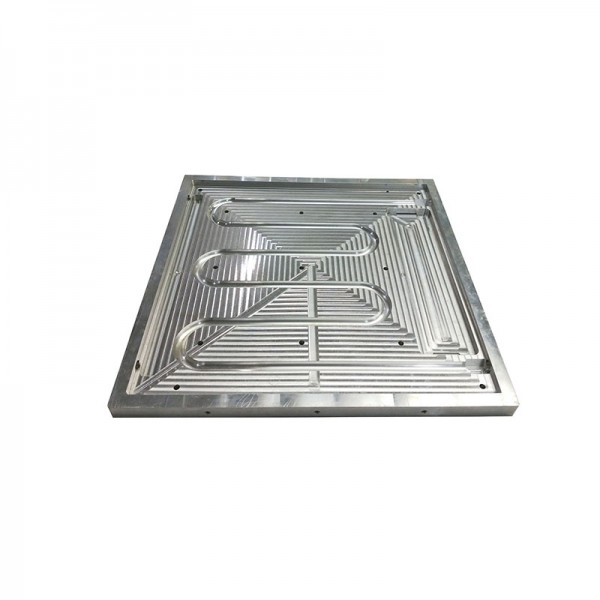18. Friction Stir Welding Heatsink
페이지 정보
작성자 최고관리자 작성일 21-07-15 16:03본문
Friction welding (friction stir welding) refers to the use of the heat generated by the friction between the high-speed rotating welding tool and the workpiece to locally plasticize the material to be welded.
When the welding tool moves forward along the welding interface, the plasticized material is in the welding tool.
The rotating friction force flows from the front to the back of the welding tool, and forms a dense solid-phase weld under the squeeze of the welding tool.
* Friction welding usually consists of the following four steps:
1. Convert mechanical energy into heat energy;
2. Material plastic deformation;
3. Forging pressure under thermoplasticity;
4. Intermolecular diffusion and recrystallization.
* The main advantages of friction stir welding are as follows:
(1) The microstructure change of the heat-affected zone of the welded joint is small. The residual stress is relatively low, and the welding workpiece is not easy to deform;
(2) Long welds, large cross-sections, and different positions can be welded at one time. Connector height:
(3) The operation process is convenient to realize mechanization and automation, the equipment is simple, the energy consumption is low, the efficiency is high, and the requirements for the working environment are low:
(4) No need to add welding wire, no need to remove the oxide film before welding when welding aluminum alloy, no shielding gas is needed, and the cost is low;
(5) Weldable materials that are sensitive to thermal cracks, suitable for welding dissimilar materials:
(6) The welding process is safe, pollution-free, smoke-free, and radiation-free.
.
When the welding tool moves forward along the welding interface, the plasticized material is in the welding tool.
The rotating friction force flows from the front to the back of the welding tool, and forms a dense solid-phase weld under the squeeze of the welding tool.
* Friction welding usually consists of the following four steps:
1. Convert mechanical energy into heat energy;
2. Material plastic deformation;
3. Forging pressure under thermoplasticity;
4. Intermolecular diffusion and recrystallization.
* The main advantages of friction stir welding are as follows:
(1) The microstructure change of the heat-affected zone of the welded joint is small. The residual stress is relatively low, and the welding workpiece is not easy to deform;
(2) Long welds, large cross-sections, and different positions can be welded at one time. Connector height:
(3) The operation process is convenient to realize mechanization and automation, the equipment is simple, the energy consumption is low, the efficiency is high, and the requirements for the working environment are low:
(4) No need to add welding wire, no need to remove the oxide film before welding when welding aluminum alloy, no shielding gas is needed, and the cost is low;
(5) Weldable materials that are sensitive to thermal cracks, suitable for welding dissimilar materials:
(6) The welding process is safe, pollution-free, smoke-free, and radiation-free.
.




